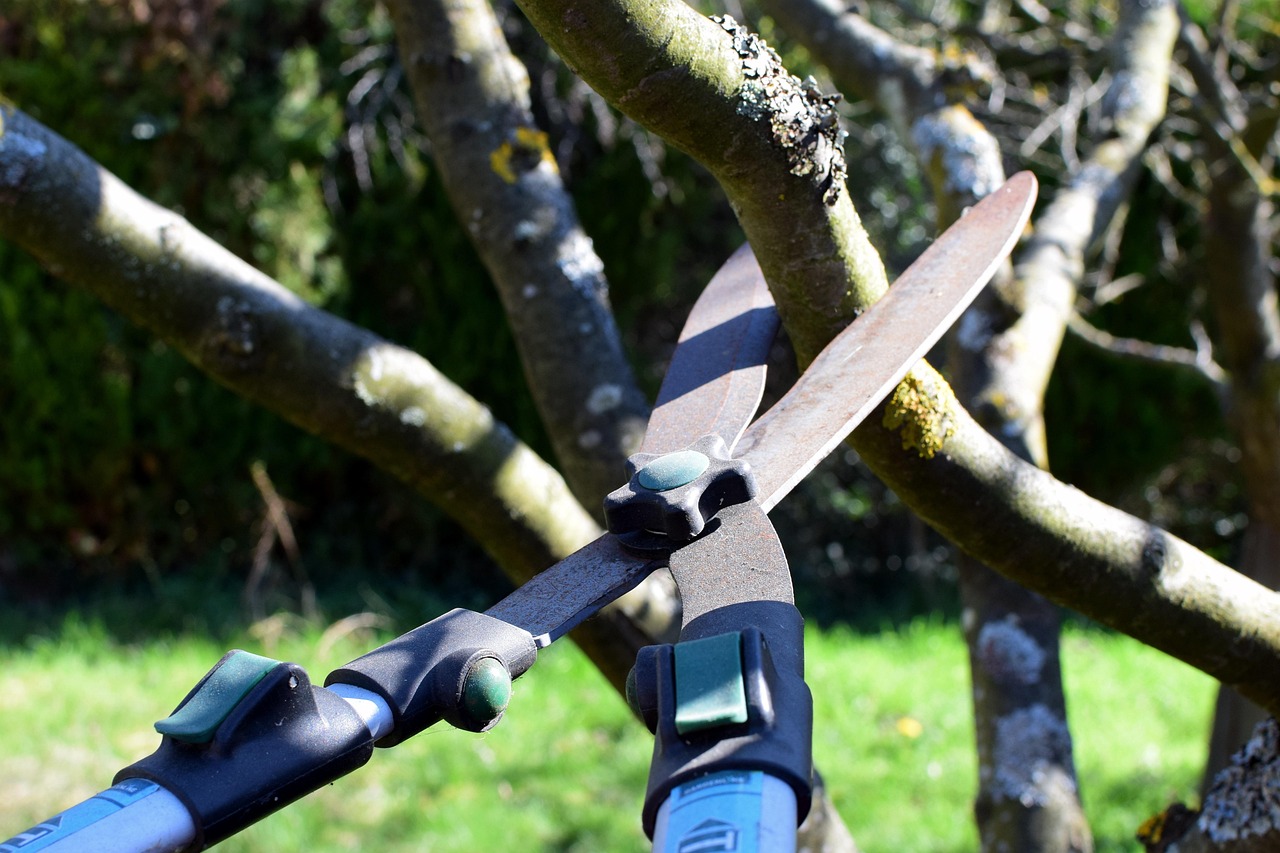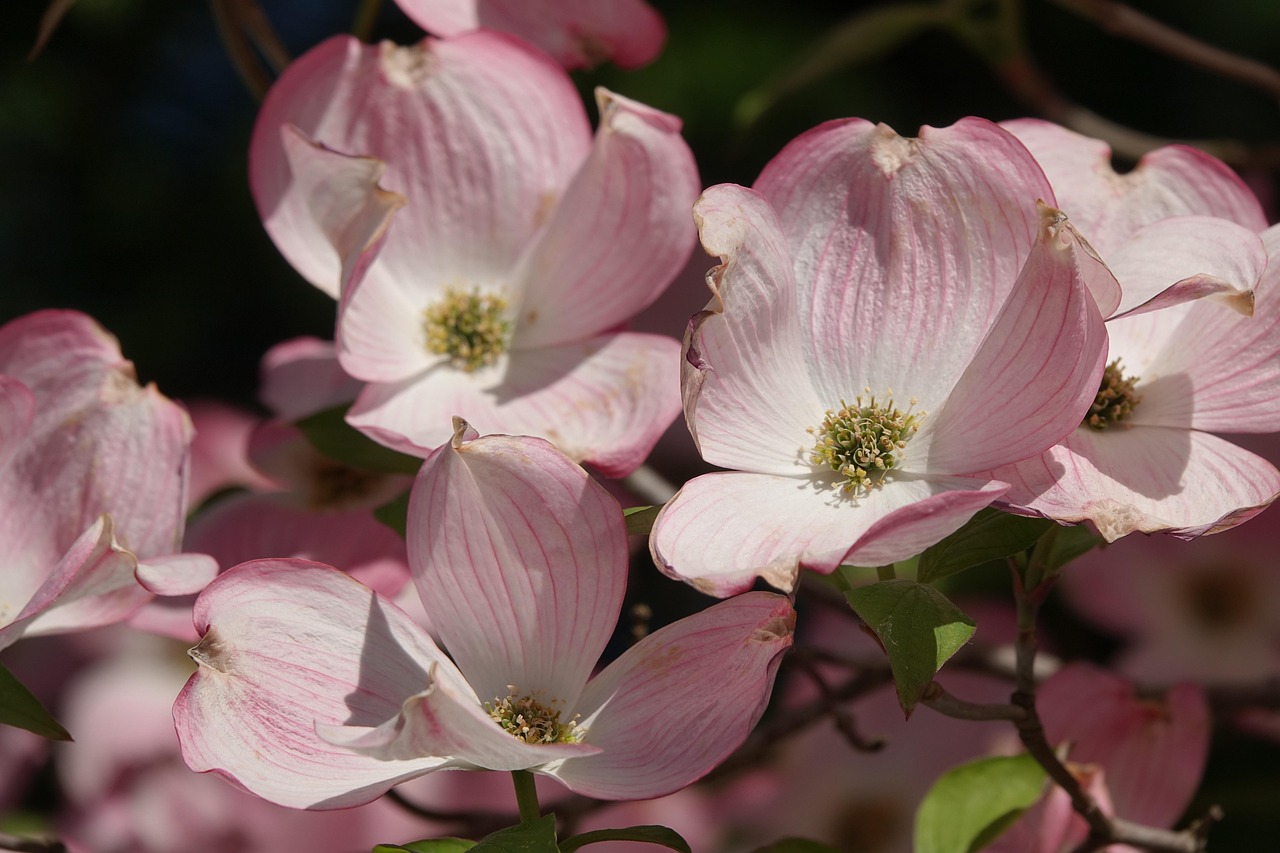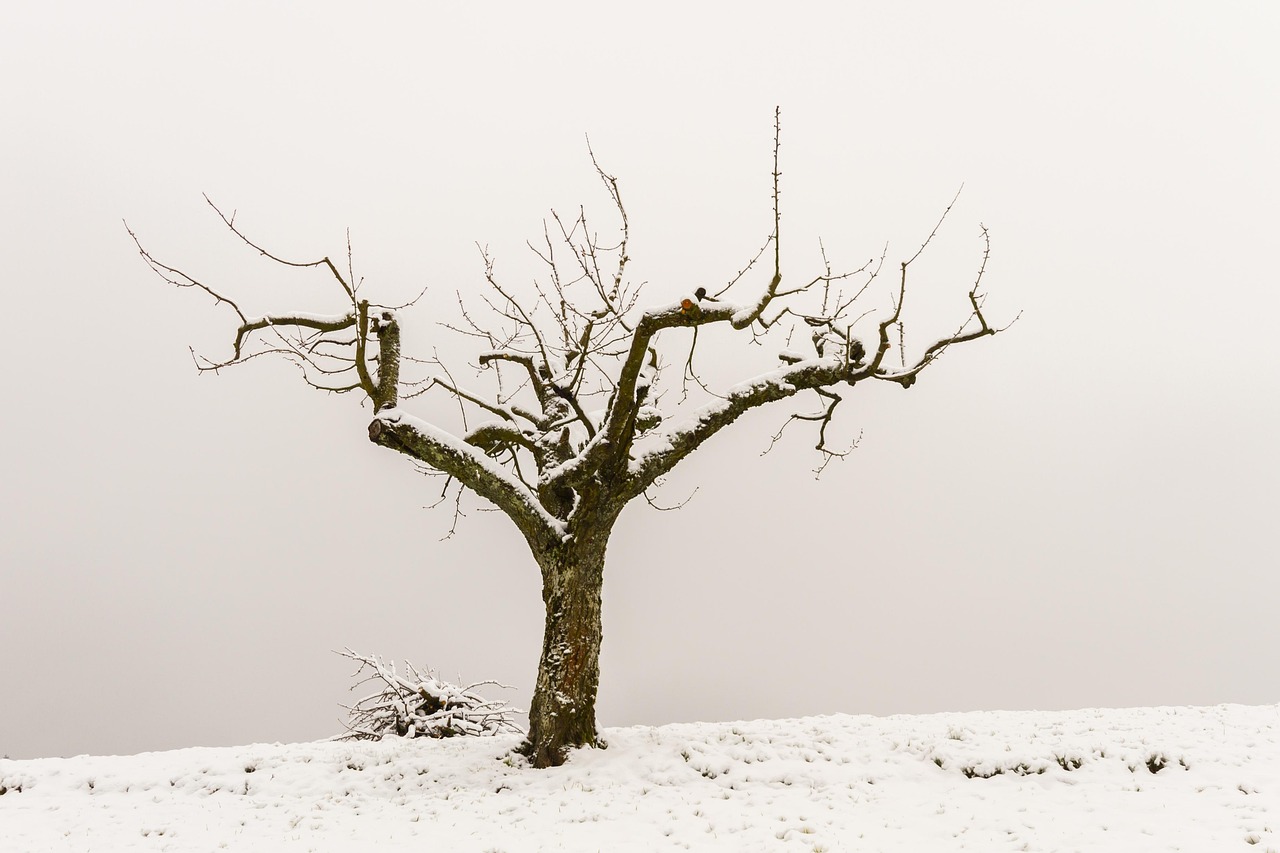Crabapple tree pruning for garden pathways enhances the tree’s health and aesthetics. Proper pruning encourages good air circulation, reduces disease, and shapes the tree for optimal growth while improving the overall pathway experience.
Crabapple trees are a popular choice among gardeners for their beautiful flowers and vibrant fruits. These trees not only provide visual interest but also attract birds and beneficial insects. However, to maintain their beauty and ensure healthy growth, regular pruning is essential. This process can greatly influence how the tree interacts with surrounding pathways, making it an important aspect of garden design.

Pruning crabapple trees helps to manage their size and shape. This is particularly important in garden pathways where space may be limited. Well-pruned trees create an open and inviting atmosphere while allowing for safe passage. Furthermore, pruning can prevent branches from encroaching on walkways, reducing the risk of accidents.
Benefits of Pruning Crabapple Trees
Pruning offers numerous benefits to both the tree and the garden environment. Here are some key advantages:
- Improved Air Circulation: Removing excess branches allows air to flow freely, reducing the likelihood of fungal diseases.
- Better Sunlight Penetration: Pruned trees receive more sunlight, promoting healthier foliage and fruit production.
- Increased Flowering: Regular pruning encourages new growth, leading to more abundant blooms in spring.
- Enhanced Shape and Size Control: Pruning helps maintain a desirable shape and size, especially in confined spaces.
Understanding the right time and technique for pruning is crucial. The best time to prune a crabapple tree is during late winter or early spring before new growth begins. This timing minimizes stress on the tree and reduces the risk of disease. Additionally, it gives gardeners a clear view of the tree’s structure without leaves obscuring the branches.

Essential Pruning Techniques
To effectively prune crabapple trees, gardeners should follow specific techniques. Below are some essential methods to consider:
- Thinning: This involves removing entire branches to reduce density. Thinning opens up the canopy, allowing sunlight and air to penetrate better.
- Heading Back: This technique shortens branches to encourage bushier growth. It is ideal for shaping the tree and managing its height.
- Crown Raising: This involves removing lower branches to raise the crown of the tree. It is particularly useful for creating clearance over pathways.
When pruning, it is important to use clean, sharp tools to make precise cuts. This minimizes damage to the tree and helps prevent infections. Gardeners should also ensure that they prune at the correct angles to promote proper healing.
Common Mistakes to Avoid
Pruning can be beneficial, but there are common pitfalls that gardeners should avoid:

- Over-Pruning: Removing too many branches can stress the tree and lead to poor health.
- Improper Timing: Pruning at the wrong time can result in reduced flowering or increased disease susceptibility.
- Neglecting Tools: Using dull or dirty tools can harm the tree and introduce pathogens.
By being aware of these mistakes, gardeners can ensure that their crabapple trees thrive while enhancing the beauty of their pathways.
Factors Influencing Pruning Decisions
A variety of factors should be considered when planning to prune crabapple trees. These include:
| Factor | Description |
|---|---|
| Tree Age | Younger trees may require different pruning techniques compared to mature ones. |
| Tree Health | A healthy tree can withstand more aggressive pruning than a stressed one. |
| Location | The proximity of pathways may dictate how much space should be left around branches. |
In conclusion, understanding how to properly prune crabapple trees is essential for any gardener looking to enhance their garden pathways. With careful planning and execution, pruning can lead to healthier trees that contribute positively to the garden’s overall aesthetic.

Pruning Tools and Techniques
Having the right tools is essential for effective crabapple tree pruning. Using appropriate equipment ensures clean cuts and reduces stress on the tree. Here are some commonly used tools in the pruning process:
- Hand Pruners: Ideal for small branches, hand pruners allow for precise cuts.
- Loppers: These are useful for thicker branches that hand pruners cannot handle.
- Pruning Saws: Best for larger branches, pruning saws can cut through substantial wood efficiently.
- Pole Pruners: These extendable tools help reach high branches without the need for a ladder.
- Gloves and Safety Goggles: Personal protective equipment is vital for safety during pruning.
Before starting the pruning process, it is crucial to inspect your tools. Ensure they are sharp and clean to avoid transferring diseases between plants. Damaged or rusty tools can harm the tree and hinder growth.
Understanding the Structure of Crabapple Trees
To prune effectively, one must understand the basic structure of crabapple trees. The tree’s architecture consists of several key components:
- Main Trunk: The central support of the tree, providing stability and strength.
- Branches: These extend from the trunk and provide support for leaves and flowers.
- Leaders: The main vertical branches that dictate the height and shape of the tree.
- Side Branches: Smaller branches that grow off the leaders and contribute to the overall canopy.
Recognizing these components allows gardeners to make informed decisions about which branches to prune. Maintaining a well-defined structure can improve light penetration and air circulation, leading to a healthier tree.
Types of Pruning Cuts
Different types of cuts serve specific purposes in crabapple tree pruning. Understanding these cuts can help achieve the desired shape and health of the tree:
- Thinning Cuts: These cuts remove entire branches to reduce density, allowing more sunlight and air to reach inner parts of the tree.
- Reduction Cuts: These shorten long branches to reduce their length without removing them entirely. This technique helps maintain overall size.
- Heading Cuts: These involve cutting back a branch to a bud or lateral branch, promoting bushier growth and denser foliage.
- Clean Cuts: Always aim for clean cuts at an angle to facilitate healing and prevent decay.
Using these techniques appropriately can significantly enhance the tree’s health and appearance. Each cut should be made with care to ensure that the remaining structure supports future growth.
Seasonal Considerations for Pruning
The timing of pruning is critical for achieving optimal results with crabapple trees. Different seasons can affect how and when to prune:
| Season | Recommended Actions |
|---|---|
| Late Winter to Early Spring | This is the ideal time for pruning as trees are still dormant. It minimizes stress and promotes vigorous growth in spring. |
| Summer | Light pruning can be done to remove any dead or diseased wood, but major pruning should be avoided as it may stress the tree. |
| Fall | Avoid heavy pruning in fall. This is a time when trees prepare for dormancy, and cutting can disrupt this process. |
By following seasonal guidelines, gardeners can maximize the effectiveness of their pruning efforts. This not only maintains tree health but also enhances its beauty throughout the year.
Signs That Your Crabapple Tree Needs Pruning
Certain indicators suggest that a crabapple tree may require pruning. Being aware of these signs can help in timely interventions:
- Crowded Canopy: If branches are overlapping or tightly packed, thinning is necessary to promote air circulation.
- Dead or Diseased Wood: Look for any brown or brittle branches. These should be removed promptly to prevent spread.
- Pest Infestation: Signs of pests can often appear on specific branches. Pruning affected areas can help manage infestations.
- Unusual Growth Patterns: If branches grow in unexpected directions, corrective pruning might be needed to restore balance.
Monitoring these signs regularly can help maintain a healthy and aesthetically pleasing crabapple tree, ensuring it remains a focal point in your garden pathways.
Pruning Techniques for Specific Crabapple Varieties
Crabapple trees come in various species and cultivars, each with unique characteristics. Understanding the specific pruning needs of different varieties can enhance their growth and appearance. Here are some common types of crabapple trees and their pruning requirements:
- Malus ‘Prairifire’: This variety is known for its vibrant flowers and disease resistance. Prune in early spring to remove any dead wood and shape the tree.
- Malus ‘Sargentii’: A smaller tree that thrives in compact spaces. Regular light pruning is recommended to maintain its shape and encourage new growth.
- Malus ‘Donald Wyman’: Famous for its large, showy flowers. Prune after flowering to avoid cutting off potential blooms for the next season.
- Malus ‘Royal Raindrops’: This ornamental variety requires minimal pruning. Focus on removing crossing branches to maintain an open canopy.
By tailoring your pruning approach to the specific variety, you can ensure healthy growth and maximize the tree’s ornamental qualities.
Techniques for Managing Tree Size
When crabapple trees grow too large for their designated spaces, size management becomes necessary. Here are effective techniques to control the height and width of your tree:
- Selective Thinning: Remove selected branches from the interior and lower parts of the tree. This reduces overall density while maintaining a natural shape.
- Heading Cuts: Shorten branches back to a lateral bud. This technique not only reduces height but also encourages bushier growth.
- Crown Reduction: For significantly large trees, consider reducing the overall crown size. This involves cutting back major limbs to lateral branches or buds.
These techniques can help maintain an appropriate size for garden pathways without sacrificing the tree’s health or beauty.
Post-Pruning Care
After pruning, it is important to provide proper care to help your crabapple tree recover and thrive. Here are some key steps to follow:
- Watering: Ensure the tree receives adequate water after pruning. This supports new growth and helps reduce stress.
- Mulching: Apply a layer of organic mulch around the base of the tree. This retains moisture, suppresses weeds, and regulates soil temperature.
- Fertilization: Use a balanced fertilizer in early spring to promote healthy growth. Avoid over-fertilizing, as this can lead to excessive foliage growth at the expense of flowers.
- Pest Monitoring: Keep an eye on any signs of pest activity after pruning. Implement preventive measures if necessary.
Taking these steps can significantly enhance the recovery process and improve the overall health of your tree.
Pest Management After Pruning
Pruning can sometimes expose crabapple trees to pests and diseases. To protect your tree, consider these pest management strategies:
- Regular Inspections: Frequently check for signs of pests such as aphids, spider mites, or scale insects. Early detection is key to effective control.
- Beneficial Insects: Encourage beneficial insects like ladybugs and lacewings that naturally prey on harmful pests.
- Pesticide Application: If necessary, use organic or chemical pesticides appropriate for crabapple trees. Always follow label instructions carefully.
- Cultural Practices: Maintaining good cultural practices, such as proper watering and fertilization, can strengthen trees against pest attacks.
Implementing these strategies will help keep your crabapple tree healthy and vibrant post-pruning.
Common Diseases Affecting Crabapple Trees
Certain diseases may also affect crabapple trees, making it essential to be aware of their symptoms and treatments. Here are some common diseases along with their identification and prevention methods:
| Disease | Symptoms | Treatment/Prevention |
|---|---|---|
| Cedar-Apple Rust | Yellow-orange spots on leaves; galls on cedar trees. | Remove infected leaves; apply fungicide as needed. |
| Powdery Mildew | White, powdery spots on leaves; distorted growth. | Avoid overcrowding; use fungicides if severe. |
| Canker Disease | Sunken lesions on branches; leaf drop. | Prune affected areas; ensure good air circulation. |
| Fire Blight | Browning and wilting of flowers; blackened shoots. | Prune infected branches; apply bactericides when necessary. |
Recognizing these diseases early allows for timely intervention, helping maintain the health of your crabapple trees in garden pathways.
Seasonal Maintenance and Care
In addition to pruning, seasonal maintenance plays a crucial role in the health of crabapple trees. Each season presents unique opportunities and challenges for tree care. Here are some seasonal tasks to consider:
Spring
After pruning in late winter or early spring, focus on the following:
- Fertilization: Apply a balanced fertilizer to promote robust growth and flowering.
- Pest Control: Monitor for early signs of pests and apply appropriate treatments as needed.
- Watering: Ensure consistent moisture levels, especially during dry spells.
Summer
During the summer months, the emphasis should be on maintenance:
- Regular Inspections: Check for pests and diseases regularly to catch any potential issues early.
- Watering: Maintain adequate watering, particularly for young trees that are still establishing their root systems.
- Weed Control: Keep the area around the tree clear of weeds to reduce competition for nutrients.
Fall
As the growing season winds down, focus on preparing the tree for dormancy:
- Final Inspections: Look for any remaining dead or diseased wood that needs removal before winter.
- Mulching: Add mulch around the base of the tree to insulate roots and conserve moisture.
- Watering: Ensure the tree is well-watered before the ground freezes to support root health during winter.
Winter
Winter care is minimal but important:
- Protection from Snow and Ice: If heavy snow accumulates on branches, gently brush it away to prevent breakage.
- Monitoring: Keep an eye out for any signs of animal damage, such as from deer or rodents.
Enhancing Pathway Aesthetics with Crabapple Trees
Crabapple trees enhance garden pathways not only through their beauty but also by providing numerous ecological benefits. Here are some ways they improve pathway aesthetics:
- Seasonal Color Changes: With blossoms in spring, vibrant foliage in summer, and colorful fruits in fall, crabapple trees offer year-round visual appeal.
- Wildlife Habitat: The fruits attract birds and beneficial insects, creating a lively atmosphere around pathways.
- Fragrance: Many crabapple varieties produce fragrant flowers, enhancing the sensory experience of walking through gardens.
- Shelter and Shade: Well-pruned trees can provide shade along pathways, making them more comfortable during hot days.
Cultivating a diverse landscape with crabapple trees adds layers of interest and beauty to any garden setting. By carefully planning their placement and maintenance, gardeners can create enchanting pathways that invite exploration.
Final Thoughts
Crabapple tree pruning is a vital practice that promotes healthy growth and enhances the beauty of garden pathways. By understanding the specific needs of these trees, including seasonal care, pest management, and appropriate pruning techniques, gardeners can ensure that their crabapple trees thrive. Regular maintenance not only contributes to the health of the trees but also enriches the overall garden environment.
The rewards of proper pruning extend beyond the trees themselves. They create inviting spaces for both people and wildlife, contributing to a harmonious garden ecosystem. With careful attention and dedication, crabapple trees can serve as stunning focal points along pathways, bringing joy and beauty to any landscape.
In conclusion, whether you are a seasoned gardener or just starting your journey, understanding crabapple tree pruning is essential for maintaining a vibrant garden. With the right knowledge and tools, you can cultivate stunning crabapple trees that enhance your outdoor spaces for years to come.
